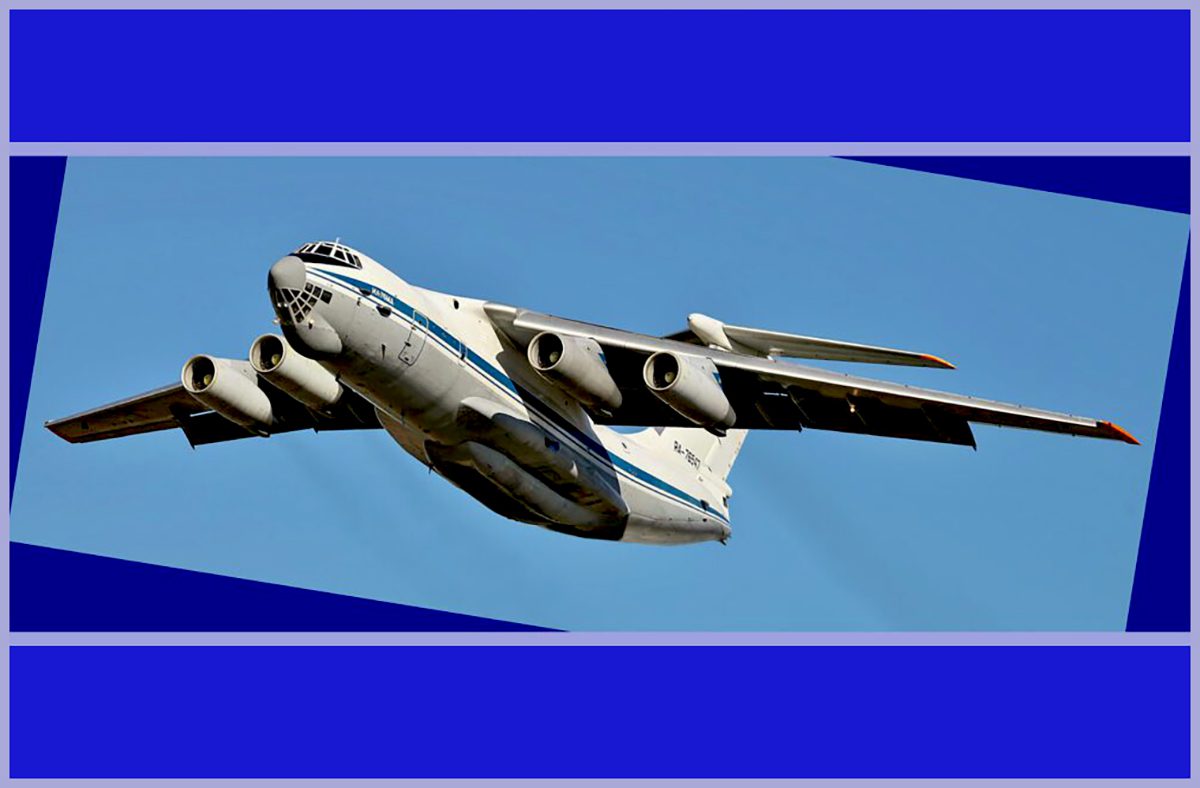The Ilyushin IL-76, often referred to as the “Workhorse of the Skies,” has been an indispensable asset for the Indian Air Force (IAF) due to its exceptional capabilities. IL-76 The Transporter cum AWACS of IAF, is a tactical airlifter with a fixed wing, four engines, and a turbofan that was created by the Ilyushin Design Bureau in the Soviet Union. Its purpose was to transport large apparatus to places that were hard to reach, including remote regions and war zones.

In Europe, Asia, and Africa, military versions of the IL-76 have been employed extensively, including as command centres and aerial refuelling tankers. This has proven to be a reliable and versatile platform, capable of operating in challenging environments and performing a wide range of missions.
The IL-76 is primarily used as a transport aircraft to move troops, equipment, and supplies across long distances. However, some of the IAF’s IL-76s have been modified to serve as airborne early warning and control systems (AWACS). These aircraft are equipped with a rotating radar dome mounted on top of the fuselage, providing 360-degree coverage of the airspace around the aircraft. The AWACS system allows the IAF to monitor and control the airspace, detect and track enemy aircraft, and coordinate air defence operations.

The IL-76 boasts a maximum takeoff weight of 190 tons and has the capacity to transport up to 60,000 kg (132,000 lb) of cargo, encompassing vehicles, equipment, and personnel. Additionally, it can accommodate either 225 passengers or 145 fully equipped paratroopers. Notably, the aircraft exhibits the ability to operate from unpaved runways as short as 1,700 meters (5,500 feet), rendering it particularly suitable for both military and humanitarian missions conducted in remote regions.
The aircraft has been used by several air forces in various conflicts and operations around the world, including in Afghanistan, Iraq, and Syria. It has also been employed in humanitarian missions, delivering aid to areas affected by natural disasters. This multi-purpose rugged design aircraft’s NATO reporting name is Candid. Moreover, this super transport aircraft bears similarities to its American counterpart, the Boeing Globemaster III.
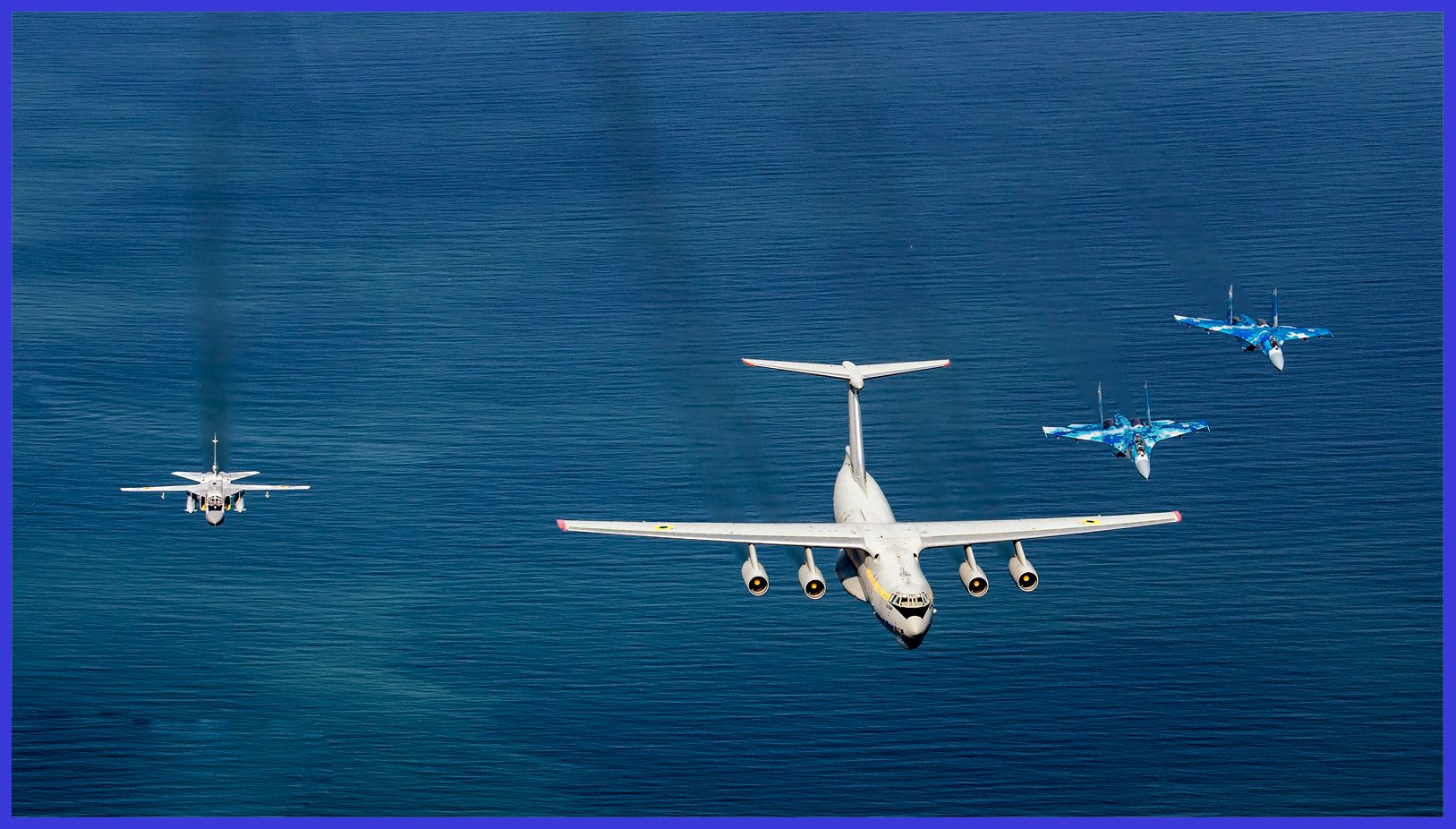
Planning and Creation of the Transport Version of IL-76
In particular, for large or heavy objects that cannot be transported by other means, the Il-76 has seen significant service as a commercial freighter for ramp-delivered cargo. Additionally, it has been employed as a global emergency response transport for both humanitarian assistance and disaster relief, as well as for the evacuation of civilians. It has been useful in undeveloped areas due to its capacity to fly from unpaved runways. Additionally, specialized models have been created for zero-G training and aerial firefighting.
The IL-76 aircraft had its inception in 1967 as a result of Ilyushin’s efforts to meet the demand for a freighter with the capability to operate from short and unprepared airstrips. Its design was geared towards carrying a payload of 40 tonnes (88,000 lb) over a distance of 5,000 kilometres in less than six hours, all while being resilient in the face of the most challenging weather conditions typical of Siberia and the Soviet Union’s Arctic regions. The main objective behind this development was to replace the Antonov An-12. The culmination of these endeavours came with the successful completion of the aircraft’s maiden flight in March 1971.

The Tashkent Aviation Production Association, situated in Tashkent, Uzbekistan, which was a republic of the Soviet Union at the time, was given responsibility for the production of the Il-76. The basic transport variations totalled Over 900 units in production. In the 1990s, they made a newer version of the aeroplane, which had better engines called Soloviev D-30 turbofan engines. Which is used by various countries and organizations around the world.
They also made the cargo compartment bigger ( 20 meters long, 3.4 meters wide, and 3.4 meters tall ). However, they didn’t make many of these newer versions because the Russian Air Force, who used the planes the most, didn’t have enough money to buy them. The first test flight of the newer version called the Il-76MF was flown on August 1, 1995.

Further Development of the Newer Version of IL-76/78
A handful of commercial aircraft was updated beginning in 2004 to the Il-76TD-90VD version, which included the installation of the recently designed PS-90 engine to abide by European noise regulations. The People’s Republic of China ordered 34 brand-new Il-76MD aircraft as well as four Il-78 tankers in 2005. China placed a 12-Il-76MD aircraft order with the Russian military exporter Rosoboronexport in June 2013.
The Il-76 aircraft has been changed to do other jobs too. For example, they made a version called the Il-78 that can refuel other planes while flying in the air. They also made a firefighting version that drops water on fires and a version used for early warning and control in the air ( AEW&C ). This version was called the Beriev A-50 “Mainstay,” and they made about 25 of them. In addition, they used the Il-76 for trips to Antarctica and to help cosmonauts train for space. Finally, they built two special planes called A-60, that had lasers on them, but many details about this project are kept secret.
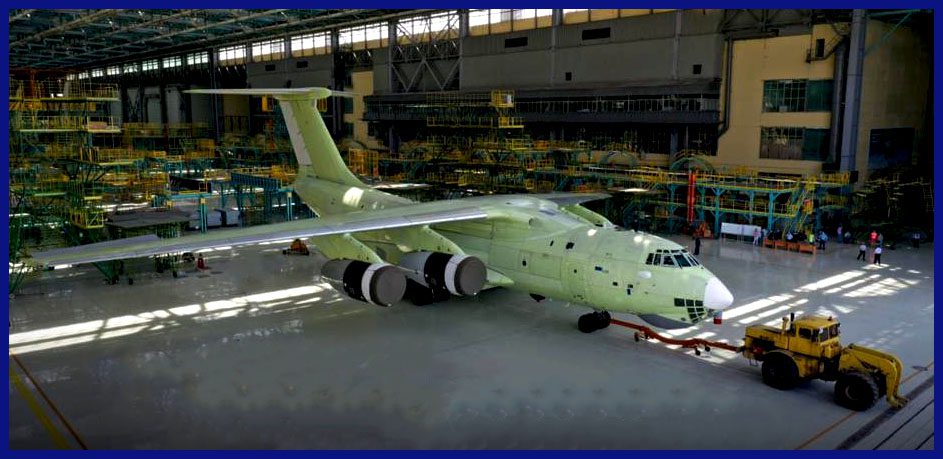
For IL-76MD-90A Russian Air Force Transport Fleet
The Ilyushin Il-76MD-90A is a modernized version of the Il-76 transport aircraft that was first introduced in the 1970s. It features new engines, avionics, and other upgrades that improve its performance and efficiency.
The first Il-76MD-90A was completed and unveiled on June 16th, 2014, at the Aviastar factory in Ulyanovsk, Russia. This was a significant milestone for the program, as it marked the first time that this newer version of the aircraft had been built and shown to the public.
The Russian Air Force ordered a total of 39 Il-76MD-90A aircraft in 2012, and on April 29th, 2015, they received the first one built at the Ulyanovsk factory. This was an important moment for the Russian Air Force, as they had been waiting for these new planes to replace their ageing fleet of Il-76 transport aircraft.
As of late 2022, the Russian government has ordered an additional 27 Il-76MD-90A aircraft to be delivered by 2028. This shows that they are confident in the capabilities of this new aircraft and are committed to replacing their older transport planes with these modernized versions. Currently, 15 of these new planes have been built and are in service.

Operational History of the Il-76, In Short
Between 1979 and 1991, the Il-76 aircraft of the Soviet Air Force completed 14,700 flights into Afghanistan, providing transportation for 315,800 tons of cargo and 786,200 service members. Remarkably, the Il-76 accounted for 89% of the total Soviet troop transportation and 74% of the airlifted cargo during that period. In an attempt to target the aircraft, Afghan insurgents made efforts to attack the Il-76 during takeoff or landing, as they were unable to shoot it down while it was flying at high altitudes.
Despite being often hit by large-calibre machine gun fire, shoulder-launched Stinger and Strela heat-seeking missiles, and other weapons, Il-76s had a very low attrition rate during this time of conflict due to their sturdy airframes’ ability to sustain significant damage and still function. Based on that experience, the majority of the equipment for the Canadian Forces in Afghanistan was transported through private Il-76 aircraft. About 200 Il-76s were in the Russian Air Force in 2006. There are 108 civilian users in Russia.
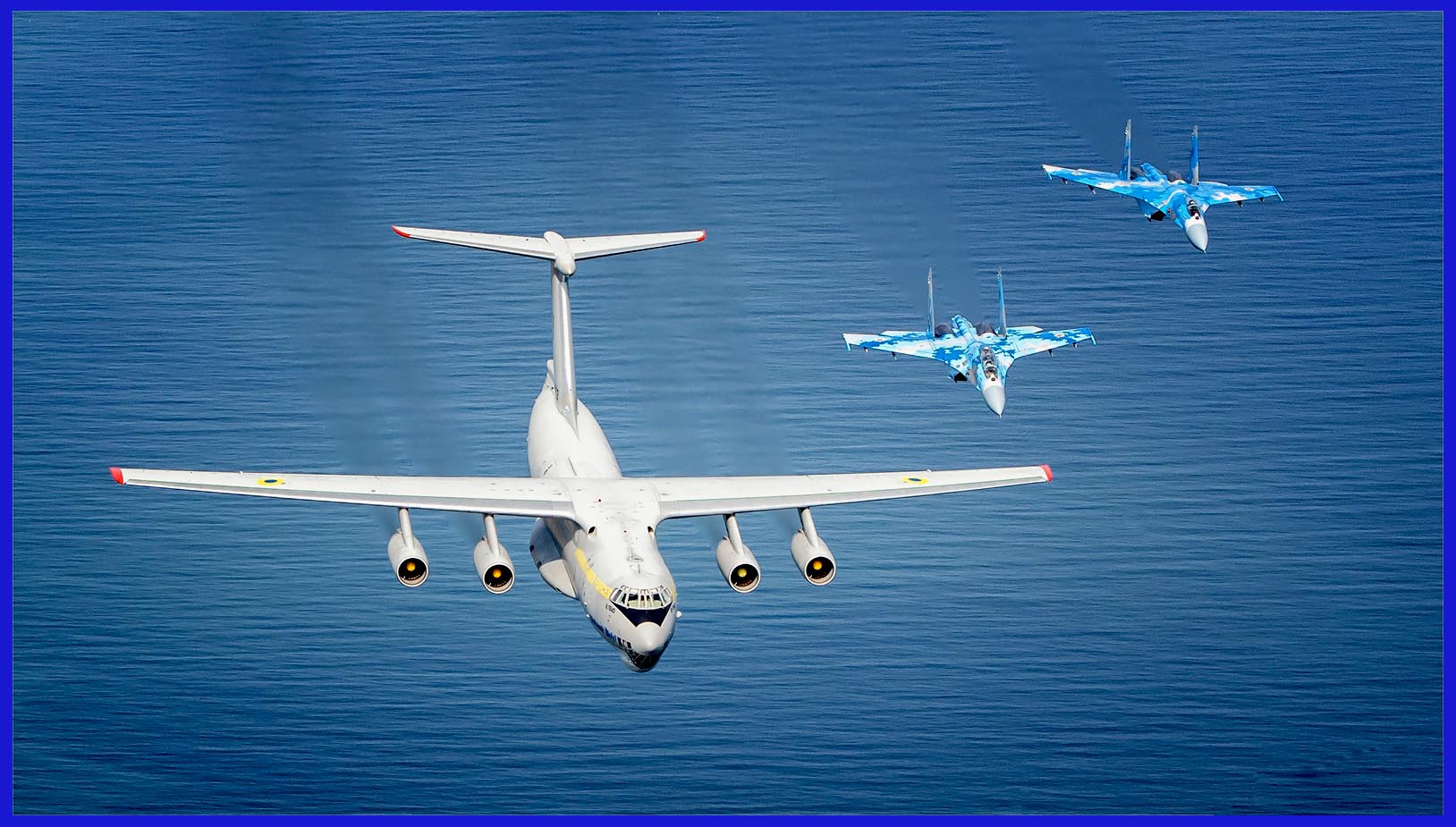
The “Airstan incident” took place on August 3, 1995, when an Airstan Ilyushin Il-76, which was operated by a Russian crew, was shot down by an Afghan Air Force aircraft while on a flight from Kabul, Afghanistan to Khankala, Russia. The Afghan government at that time was under the control of the Taliban. The aircraft was carrying a load of civilian goods, including vehicles and humanitarian aid, as well as several passengers.
After the plane was shot down, the crew of 11 was taken captive and held by the Taliban for almost a year in harsh conditions. During their captivity, they were subjected to torture, starvation, and other forms of abuse. However, the crew members managed to escape their captors in July 1996 and made their way back to the airport where their plane was still grounded. Almost Like a Hollywood Movie.
The crew then spent the next several weeks repairing the damaged aeroplane and finally took off from Afghanistan on August 16, 1996, after facing numerous obstacles and challenges. They eventually reached the safety of the Russian Federation, marking the end of their ordeal.
The “Airstan incident” is widely regarded as one of the most dramatic and harrowing stories in the history of aviation, and it has been the subject of several books and documentaries.
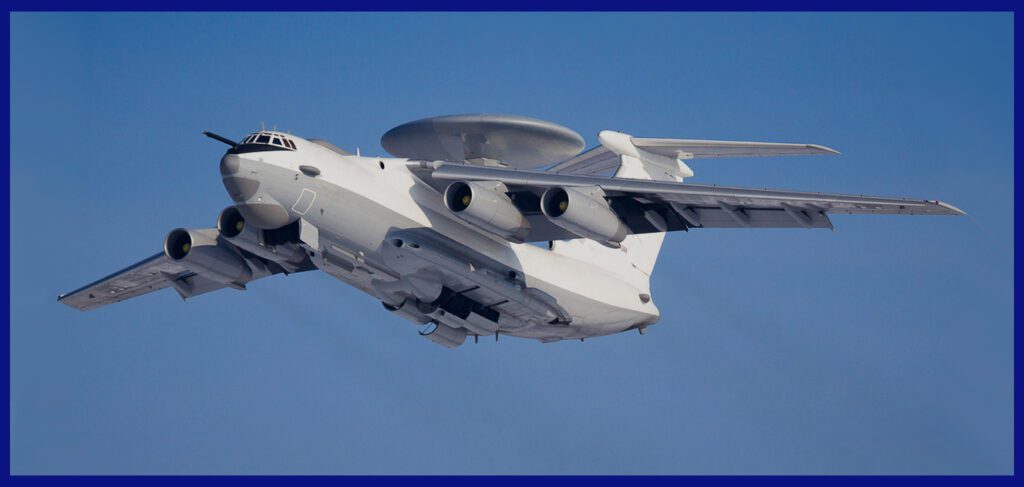
A Distinctive Conversion from Il-76 to Beriev A-50 AWACS
The Beriev A-50 is a completely new aircraft developed by Russians, based on the novel design of the Ilyushin-76 transport aircraft. It is a platform that integrates the Airborne Early Warning And Control System (AWACS). Whose NATO reporting name is ” Mainstay “
The aircraft being referred to is the Soviet/Russian Beriev A-50, which is an airborne early warning and control (AEW&C) aircraft. The A-50 had its first flight in 1978, and its existence was made known to the Western Bloc in 1980 by a Soviet engineer and spy named Adolf Tolkachev, who had infiltrated the Soviet military aviation industry and provided classified information to the US intelligence agencies. The A-50 entered service in 1985, and by 1992, around 40 of these aircraft had been produced.

Astonishing Features of the Beriev A-50 AWACS
The A-50 AWACS is designed to provide air surveillance and command and control functions to Russian military forces. The aircraft is equipped with a large rotating radar antenna mounted on top of the fuselage, which allows it to detect and track airborne targets such as aircraft and missiles. It also has a sophisticated communications suite that allows it to coordinate with ground-based stations and other airborne military assets.
The Beriev A-50 is an aircraft with a maximum takeoff weight of approximately 170,000 pounds, enabling it to reach a maximum speed of about 560 mph. With a range of approximately 3,000 miles and a service ceiling of around 40,000 feet, it exhibits impressive operational capabilities. Typically, a crew of up to 15 individuals, including radar and communications operators, aircrew, and support personnel, operates the aircraft. Notably, for air-to-air intercept or air-to-ground attack operations, the latest A-50 is capable of commanding up to twelve fighter aircraft.

The 15-member crew of the aircraft plays a crucial role in its mission. They receive vital information from the extensive Liana surveillance radar, featuring an over-fuselage rotodome with an impressive 9-meter (30-foot) diameter. This radar system allows for a detection range of 650 km (400 mi) for air targets and 300 km (190 mi) for land targets. Notably, large targets, such as surface ships, can be tracked at a considerable distance of 400 kilometres (250 mi). Moreover, the aircraft possesses the capability to perform midair refuelling of other fighter aircraft, adding to its versatility and utility.
Commencing in 2003, an upgraded iteration of the A-50U aircraft emerged, boasting cutting-edge digital avionics. This advanced system incorporates a state-of-the-art AESA (active electronically scanned array) radar from Vega Radio Engineering Corporation. Compared to its older analogue counterpart, the new radar system operates at a faster pace and exhibits superior capabilities in target identification and signal tracking. The aircraft’s interior also underwent enhancements, with improvements made to the crew areas, bathrooms, and kitchen facilities. As of December 2021, the Russian Air Force has been equipped with 7 of these modernized aircraft, reinforcing their aerial prowess.
The Beriev A-50 AWACS has been in service with the Russian military since the 1980s and has been used in a variety of conflicts and military operations. The aircraft has also been exported to other countries, including India, which operates a fleet of two A-50EI aircraft based on the A-50 platform.

Technical Specifications of IL-76MKI
- Crew: 5 ( two pilots, a navigator, an engineer, and one loadmaster )
- Length: 152 ft 10 in ( 46.59 m )
- Wingspan: 165 ft 8 in ( 50.5 m )
- Wing area: 3,200 sq ft ( 300 m2 )
- Height: 48 ft 5 in ( 14.76 m )
- Empty weight: 92,500 kg ( 203,928 lb )
- Max takeoff weight: 190,000 kg ( 418,878 lb )
- Fuel capacity: 109,620 litres ( 28,950 US gallons )
- Powerplant: 4 × Soloviev D-30KP turbofans, 117.7 kN ( 26,500 lbs ) thrust each
- Cruise speed: 900 km/h ( 560 mph )
- Operational Range: 4,400 km ( 2,700 mi )
- Ferry range: 9,300 km ( 5,800 mi )
- Service ceiling: 13,000 m ( 43,000 ft )
- Takeoff run: Maximum 4,920 ft ( 1,500 m )
- Landing run: Minimum 2,953 ft ( 900 m )
- Armament: manned radar-directed turret with two 23 mm cannons at the tail’s base

Why does the IL-76’s glass nose have a special design? ( a common question )
Firstly, the glass nose provides the pilots with an unobstructed view of the terrain ahead during takeoff, landing, and taxiing. This is particularly important for military transport aircraft that may need to operate from rough terrain or unprepared airstrips in combat zones or remote areas.
Secondly, the glass nose allows for the installation of specialised electronic equipment for military applications, such as reconnaissance or surveillance. The nose of the Il-76 can be modified to accommodate sensors, cameras, or other equipment for these purposes.

Moreover, seize this exclusive opportunity to acquire the exquisite large-scale 1/72 premium die-cast models of the formidable Sukhoi SU-57 “Felon”. These remarkable and iconic 5th-generation air machines, which belong to the Russian Air Force, are now available for purchase on AirModels with worldwide delivery. Click here now to secure your piece before the limited stock is depleted.
In conclusion,
The Ilyushin Il-76 is a versatile military transport aircraft designed for a variety of missions. With its rugged construction, long-range, and ability to operate from unprepared airstrips, it has proven to be a valuable asset in a wide range of military operations. Additionally, its unique glass nose has allowed for the installation of specialized equipment, such as radar or surveillance sensors, making it a flexible platform for a variety of missions. Overall, the Il-76 remains a reliable workhorse for military transport and support operations.

Important Announcement for Our Valued Readers!
After an article is published, it is possible that updates or changes may have occurred beyond the time of publication. Therefore, it is important to be aware that certain information in the article might be outdated. To ensure the most accurate analysis, it is highly recommended to verify the content with the latest sources available.
However, we are dedicated to delivering outstanding articles on military products and global updates. Maintaining quality and smooth operation requires resources. Your support sustains our efforts in providing insightful content. By purchasing high-quality products through our affiliated links, you help us keep our platform alive and acquire top-notch items. Your unwavering support is invaluable and inspires us to strive further.
We welcome your suggestions and requests for more information, as we value feedback from our readers. If there’s specific defence material or equipment not covered on our site, please share your request in the comments. We’ll strive to research and provide the required information. We sincerely thank you for your unwavering interest in our website, and we eagerly anticipate hearing from you! Enjoy your reading experience!
